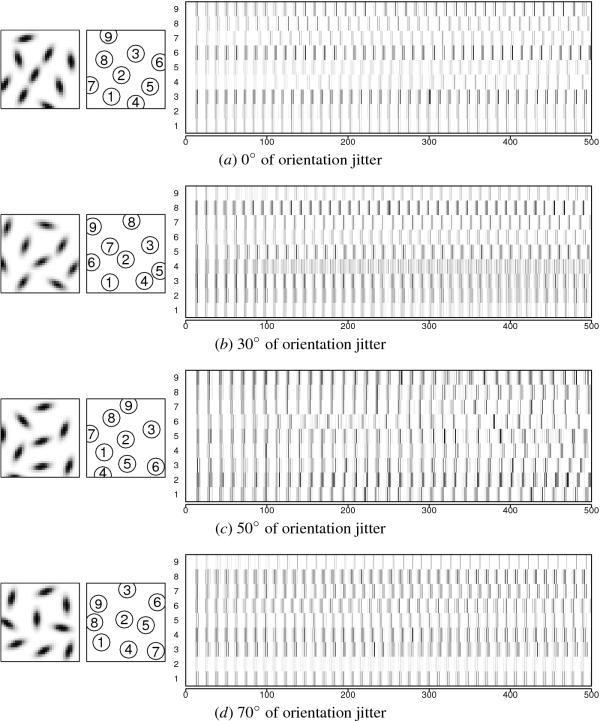
Click on the image to see a PDF version (for zooming in)
Fig. 13.6. Contour integration process with varying degrees of
orientation jitter. In each subfigure, the input presented to the
network is shown at left, the areas in GMAP where MUA was measured in
the middle, and the resulting MUA plot at right. Each contour was
composed of three contour elements, and embedded in a background of
six randomly oriented elements. Each contour runs diagonally from
lower left to top right with varying degrees of orientation
jitter. The MUA of each area is plotted in gray scale from white (no
neurons firing in the area at this time step) to black (all neurons
firing). Time (i.e. simulation iteration) is on the x-axis and the
y-axis consists of nine rows, each plotting the MUA of the area
labeled with the row number. The three bottom rows (1 to 3) represent
the MUAs of the salient contour, and the six top rows (4 to 9) the
MUAs of the background elements. The contour is very strongly
synchronized for 0o and 30o but relatively
weakly synchronized for 50o and 70o of
orientation jitter: The contours get harder to detect as the jitter
increases. In all cases (a to d), the background MUAs are
unsynchronized. A quantitative summary of these results is shown in
Figure 13.7, and an animated demo can be seen at ...
|